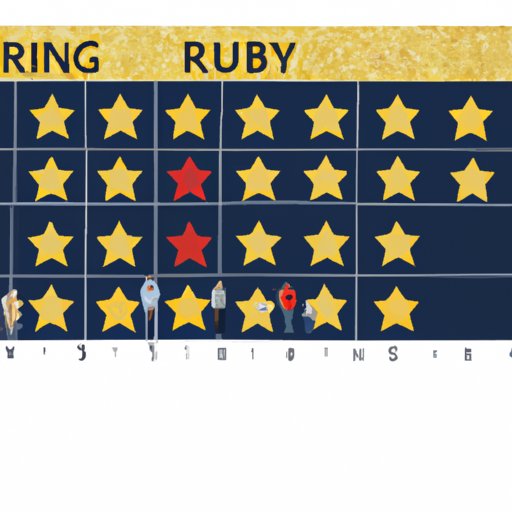
An Overview of the Movie Rating System
The movie rating system is a tool used by film studios, theaters, and parents to determine which movies are appropriate for certain audiences. It is designed to provide viewers with information about the content of a film and help them make informed decisions about which movies they watch.
The movie rating system is administered by the Motion Picture Association of America (MPAA), which assigns ratings to films based on their content. Ratings are applied to all feature-length motion pictures released theatrically in the United States.
Definition of Movie Ratings
Movie ratings are labels assigned to movies that indicate the level of appropriateness or suitability for certain ages. The ratings are intended to give viewers an idea of what kind of content is in the movie, so they can make informed decisions about whether it is suitable for them or their children.
The MPAA rating system consists of six categories: G, PG, PG-13, R, NC-17, and Unrated. Each rating carries a description of the type of content that is featured in the movie, as well as a recommended age range for viewers.
How Do Movies Get Rated?
The MPAA has a team of experienced raters who review movies and assign ratings based on their content. The process of rating a movie involves watching the entire film and then assigning a rating based on the criteria outlined by the MPAA.
The MPAA also takes into account public opinion when assigning ratings. This includes surveys conducted by the organization as well as feedback from focus groups.
A Look at the Different Movie Ratings
G-rated films are considered suitable for all audiences and feature no offensive content. These movies contain little or no violence, sexual content, or profanity.
PG-rated films may contain some material that could be inappropriate for younger viewers. These movies may contain mild action, rude humor, and some profanity.
PG-13-rated films contain mature themes and may contain violence, intense action, sexual content, and strong language. These movies are not suitable for viewers under the age of 13.
R-rated movies contain explicit content that is not suitable for viewers under the age of 17. These movies may contain strong language, intense violence, sexual content, and drug use.
NC-17-rated films contain extremely graphic content and are not suitable for viewers under the age of 18. These movies may contain explicit sex scenes, extreme violence, and drug use.
Understanding the Impact of Movie Ratings
Movie ratings have a significant impact on both moviegoers and movie studios. For moviegoers, ratings provide valuable information about the content of a film and can help them make informed decisions about which movies they watch.
For movie studios, ratings can have a major impact on the success of a film. Studies have shown that films with lower ratings tend to perform better at the box office than those with higher ratings.
Research conducted by the National Association of Theater Owners found that films rated PG-13 had the highest average box office gross, followed by films rated PG and G. Films with higher ratings, such as R and NC-17, had the lowest average box office grosses.
The Pros and Cons of Movie Ratings
Movie ratings have both advantages and disadvantages. On the one hand, ratings provide viewers with important information about the content of a film and can help them make informed decisions about which movies they watch. On the other hand, ratings can be limiting for filmmakers, as studios may be reluctant to invest in films with higher ratings, due to the potential for lower box office returns.

How Parents Can Use Movie Ratings to Guide Decisions
Parents can use movie ratings to make informed decisions about which movies are appropriate for their children. Here are some tips for understanding movie ratings:
- Read the description of each rating carefully to get an idea of the type of content that is featured in the movie.
- Take into account the age and maturity level of your child when making decisions about which movies they should watch.
- Be aware that ratings are subjective and may not always accurately reflect the content of a movie.
When making decisions about which movies their children should watch, parents should also consider factors such as the child’s interests, the child’s emotional maturity, and the family’s values.

Exploring the Relationship Between Movie Ratings and Box Office Performance
Movie ratings can have a significant impact on the success of a film. Studies have shown that films with lower ratings tend to perform better at the box office than those with higher ratings. This is because films with higher ratings may be seen as too controversial or offensive, leading some viewers to avoid them.
This can affect the marketing strategies of movie studios, as they may choose to focus their efforts on promoting films with lower ratings, in order to maximize their box office returns.
Overall, movie ratings play an important role in helping viewers make informed decisions about which movies they watch and providing movie studios with valuable information about the potential success of a film.
(Note: Is this article not meeting your expectations? Do you have knowledge or insights to share? Unlock new opportunities and expand your reach by joining our authors team. Click Registration to join us and share your expertise with our readers.)
